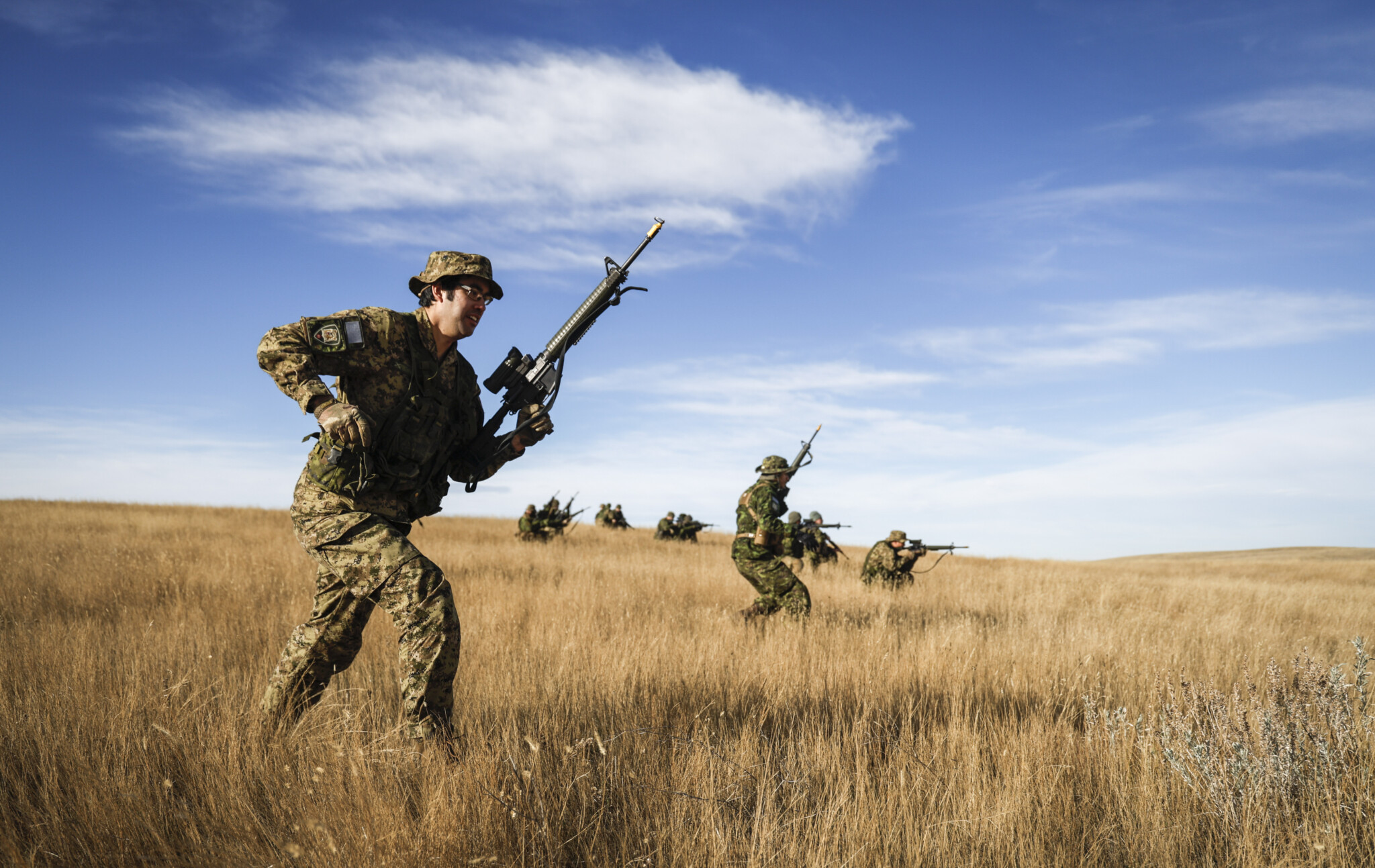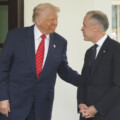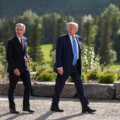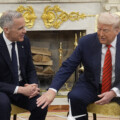Donald Trump’s recent threats to impose a 25 percent tariff on Canadian and Mexican goods have upended the political discussion in Canada and provided a renewed focus on how to best manage the two countries’ bilateral relationship.
While the president-elect’s comments were ostensibly made in regard to illegal immigration and illicit drug smuggling, an increasingly discordant part of the bilateral relationship has been Canada’s lacking defence spending. As was evident through the congressional delegation’s comments during the recent Halifax Security forum, the state of Canada’s defence spending is a major issue for America and will likely curtail the potential support within the legislative branch for Canada on any given issue.
That this has the potential to harm Canada’s overall prosperity is now beginning to be widely understood inside the country. One only must look to the recent report by the Business Council of Canada entitled “Security and Prosperity,” or the joint statement made by Canada’s premiers a few months ago calling on Canada to meet its 2 percent of GDP spending commitment.
The prime minister has repeatedly stressed that Canada will do so by 2032, but allies have expressed their dismay at this timetable and repeatedly asked for it to be accelerated. A recent Parliamentary Budget Officer report on defence spending highlights that Canada is projected to spend $41 billion on defence in 2024-25. It estimates the delta between planned spending and 2 percent of GDP is approximately $15-20 billion a year between 2025 and 2032.
That’s a lot of ground to make up in a short amount of time. But it is doable. Here’s how the government can get to 2 percent defence spending within approximately three years.
Most important is political will
The very first step, and the most important one, is for the incoming prime minister to clearly say this is a priority—instructions to the public service that delivery times must be expedited must be unequivocal. This is the figurative grease that will oil the wheels of the procurement system. Now, the gears of that system are still far too complex and not well suited for the challenges it faces, but, to appropriate the military phrase, Canada goes to procure with the system it has today, not the one it wishes it has.
Furthermore, much of the current projected spending is baked into big programs, like the F-35 fighter jets and the River class destroyers that will start to kick into gear in the late 2020s. These are highly complex projects that can’t be easily accelerated—something like the River class involves hundreds of thousands of parts and tens of thousands of suppliers—not to mention the delicate dance of getting the right resources in at the right time.
At this point, the best that can be done for these particular programs is to remove as many of the bureaucratic hurdles that are impinging on their deliveries.
Given this reality, the challenge for any incoming government is to find a set of defence spending priorities to bridge that gap. However, increasing spending on defence is not actually that easy. Each year the Department of National Defence (DND) sends hundreds of millions in unspent funds back to the treasury, partly because it can’t execute its approved programs. Thus any spending decision has to have sufficient staff capacity to implement. Simply adding money to the budget is not feasible; it would result in resource imbalances and wasted spending. Any plan must take into account the ability of DND and the government to deliver on programmed spending.

People take part in the Canadian Association of Defence and Security Industries annual defence industry trade show CANSEC in Ottawa, May 30, 2024. Sean Kilpatrick/The Canadian Press.
Second, there is essentially a global shortage of defence goods production capacity. In some areas, even if Canada has a requirement and the staff capacity, it might not be able to find someone to sell the equipment. It required Canada almost two years to deliver NASAMS missiles to Ukraine because RTX’s order book was backed up, for instance.
Call up South Korea and buy some subs
However, there is one program where the staff capacity and production scale align in Canada’s favour: the Canadian Patrol Submarine Project to replace the Royal Canadian Navy’s Victoria class submarines. This program was already critical given that the current submarine fleet needs its replacements in the water before 2035 as they are at the end of their lifespan. Any delay could spell the end of the RCN’s entire submarine force.
The staff capacity already exists, and given the RCN’s stated preference for limited to no Canadian-specific modifications, a large portion of the planning work can be absorbed by a foreign contractor. The program is already well advanced, with potential bidders having responded to a request for information just last month.
The normal next step would be a competition. However, there is already a clear front runner: the South Korean KS-III submarine. It has not only the performance and interoperability requirements sought by the RCN, but most importantly, it has an in-service design, and Hanwha Ocean has the ability to deliver submarines rapidly. The only other potential competitor in service at this time, the Spanish Isaac Peral class, likely does not have the production capacity necessary to meet the RCN’s timeline for delivery.
If the Government of Canada scrapped the competition and went to the South Korean government and negotiated a government-to-government deal to acquire the submarines, it could cut out three years of the procurement process, relieve the pressure on the submarine fleet, and show a major commitment to upgradeing the Canadian Armed Forces. It would move forward $5-10 billion dollars a year of defence spending starting around 2027. It would also allow the RCN to avoid approximately $400 million dollars in upgrades on the Victoria class, as they would exit service starting in 2030.
Going this route would cause quite a commotion. The prime minister might hear criticism from those calling for an open competition, yet given the RCN’s dire needs and the fact that it’s questionable whether the public would actually care, these voices should be ignored. Canada’s procurement and spending status quo has brought us to this mess. Dismissing those advocating for more dithering and less decisiveness will be crucial.
Additionally, there are several programs in the army, such as for mobile survivable long-range artillery, which could be executed and not stress the procurement system to the extent that it delays other programs. These are systems that were originally highlighted as necessary for operations in Latvia but have thus far not received the priority and funding necessary to see them through.
Cost: Approximately $5 billion per year starting in about 2027.
Timeline: Program award in 2026 with first deliveries in 2031-32.
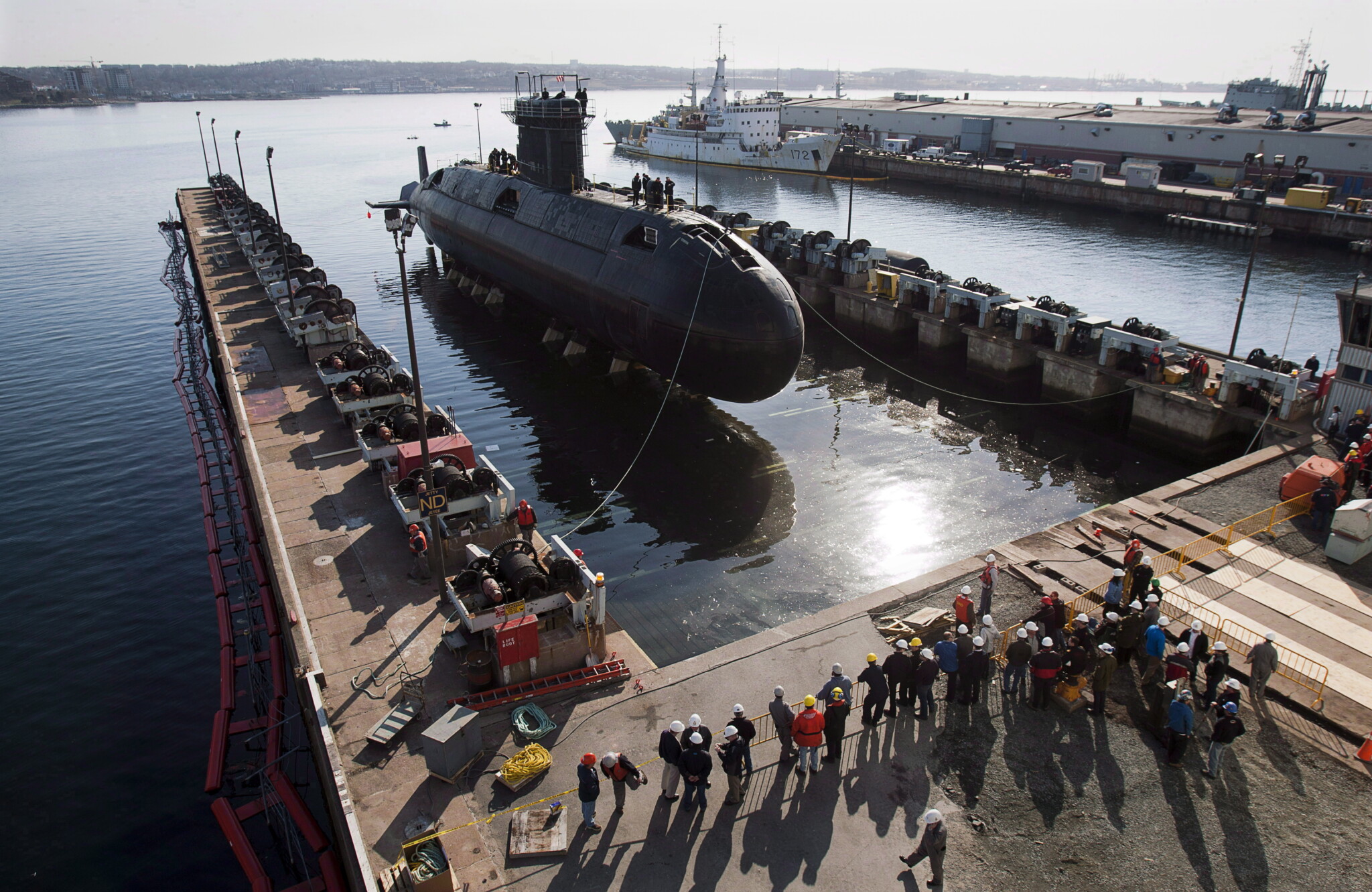
HMCS Windsor is returned to the waters of Halifax harbour in Halifax on Wednesday April 11, 2012. Andrew Vaughan/The Canadian Press.
Boost infrastructure spending
The next major area is decidedly unsexy but arguably much more necessary than other programs: modernizing the CAF infrastructure. Like with so many other areas of the CAF, many facilities and systems used by personnel on a day-to-day basis are in a dilapidated state. Talk to any CAF member and they all can highlight a piece (or many pieces) of infrastructure they personally revile, from asbestos-filled hangars from the 1930s, drafty buildings with peeling lead-based paint, or personal quarters with water damage and mold.
One good example is CFB Halifax’s Naval Armament Depot, which uses two steam boilers built in 1943 and is in desperate need of replacement. Its replacement has been on the books since the 1980s but has gone through innumerable rounds of consultations and impact assessments and has lacked the necessary funding to actually get it accomplished. It’s precisely the sort of project a major infrastructure effort would seek to address.
Stories like this are the norm within the DND. Reportedly there may be as much as $28 billion dollars in infrastructure replacement costs that are required, which were not accounted for in the recently promulgated defence policy update but still need investment regardless.
Many of these programs could be launched by DND and run by other departments or contracted out with relatively low risk. It would greatly improve the state of the CAF and prepare for the upcoming arrival of new capabilities like the River class destroyer. Even a partial investment, such as $24 billion dollars in the next four years, would make a fairly significant dent in its infrastructure deficit. It could even be partially funded through the sale of surplus buildings in high-demand areas while focusing on others that are more relevant to the CAF’s mission.
Cost: $4-6 billion dollars per year.
Timeline: 2025 onwards.
Give Canadian forces members a much-needed pay raise
Another area that could see an immediate boost is personnel spending. The CAF’s recruitment and retention challenges are well documented, with the military being short approximately 10,000 personnel. Giving members a 10-20 percent pay raise, to bring them in line with the public service payscales, would go quite a way to addressing some of these shortcomings. A relevant parallel is the 50 percent pay raise Air Canada pilots just received. Many CAF members are just as skilled and yet have seen their salaries not even keep up with the rate of inflation.An honourable mention should also go to national procurement, which is a catchall for munitions and other smaller programs that have never fully been funded and heavily raided for the war in Ukraine. Several billion dollars could be easily spent here over the next four years to return the CAF’s inventories to adequate levels.
Cost: $2.5-5.0 billion dollars per year.
Timeline: 2025 onwards.
A final note
Taken together, implementing these suggestions could boost Canadian defence spending by at least $15 billion in about three years, approximately bringing Canada up to its committed 2 percent threshold far earlier than is currently planned. The benefit of these ideas is that they can be implemented quickly and are authorized within existing policy documents like Our North Strong and Free. All they need is political willpower to see them through. It requires the government to make implementation outcomes a priority, spend resources to address them, and disregard many of the superfluous process concerns that have actually contributed to delays and cost overruns on projects.
Following through on these proposals would signal that Canada’s leaders are serious about rebuilding the country’s military capabilities, would provide much-needed support to our neglected military personnel, and would close off a major area of criticism and leverage the United States has on Canada. A win-win-win for all involved.
